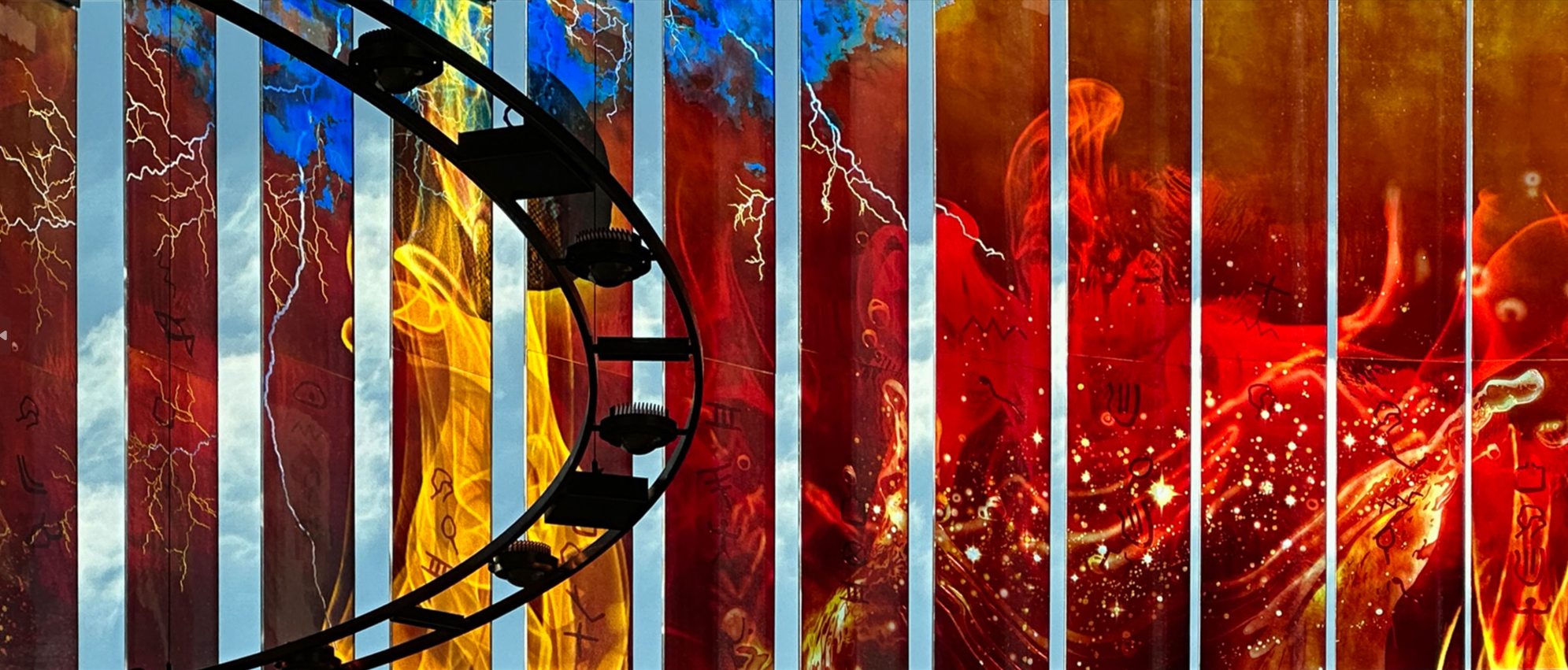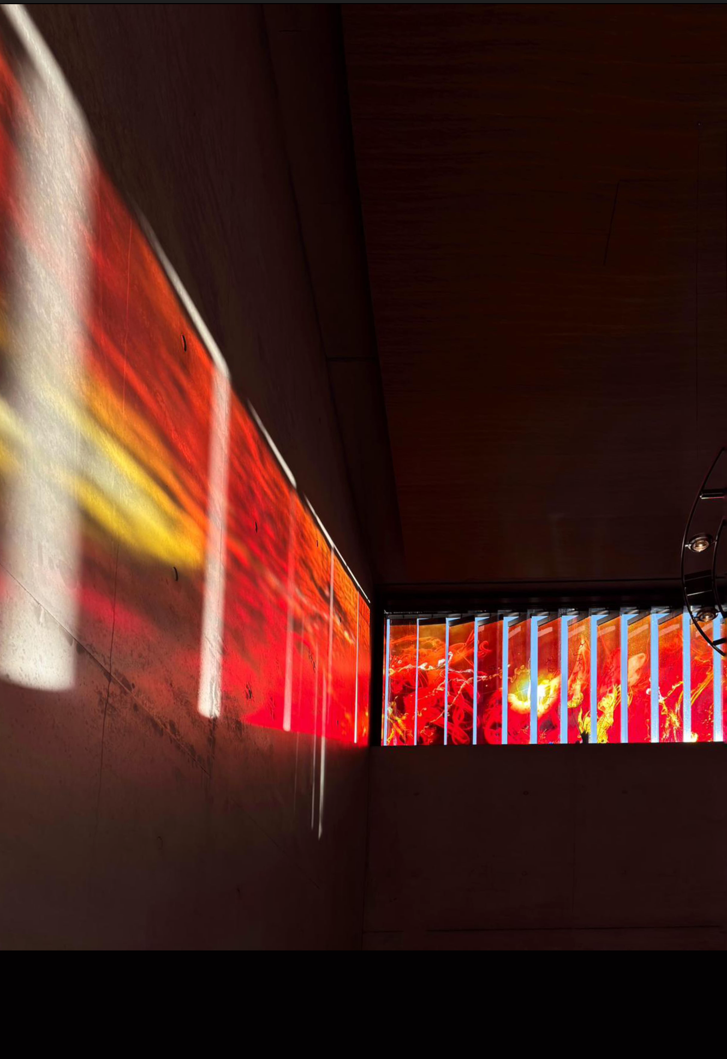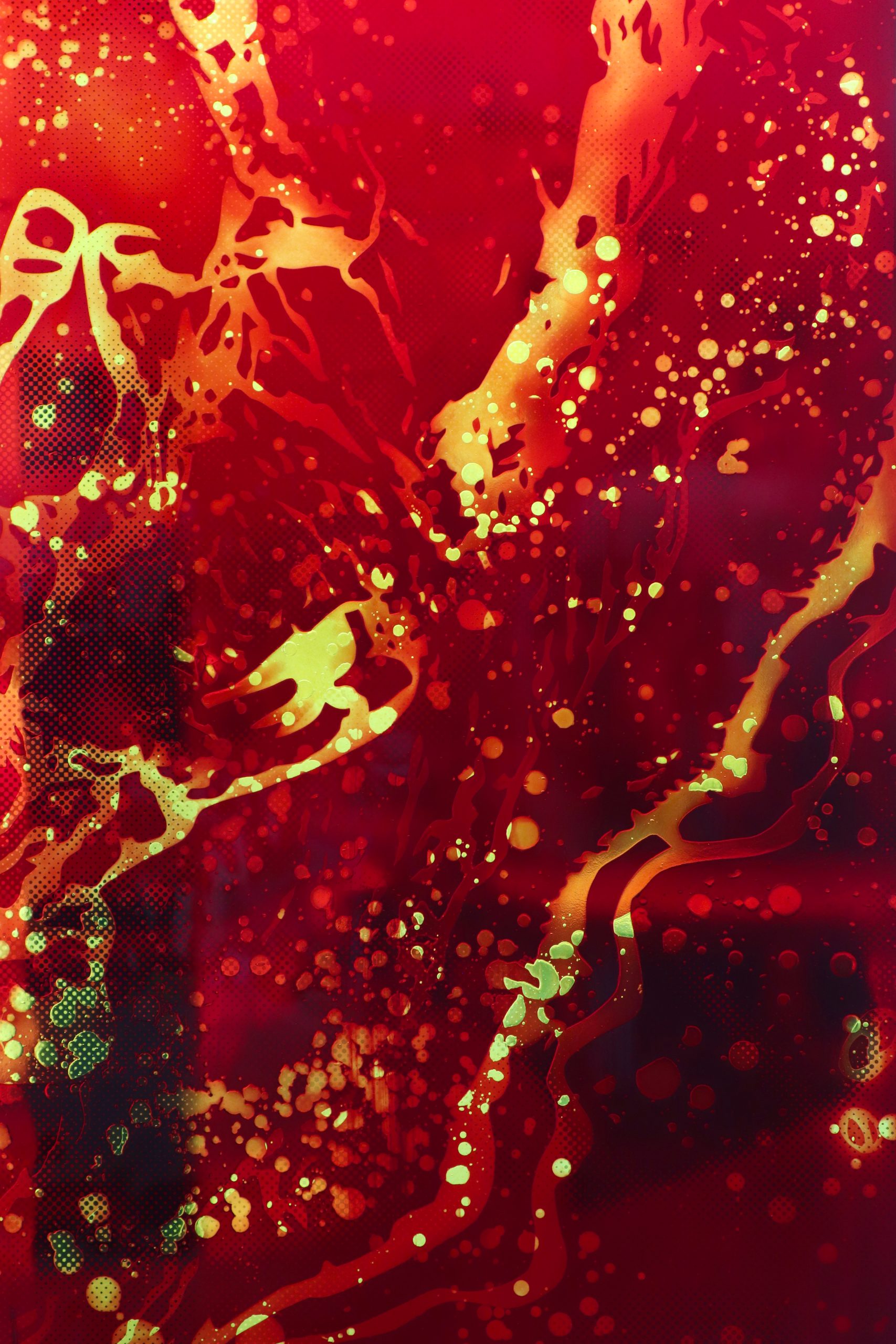Project Description
Glass Art Work EXODUS at Student-Residency Tita-Cory-Campus
Münster, Germany
Artist: René Blättermann
In 2022, artist René Blättermann developed an artistic concept for the chapel of the newly built student residency “Tita-Cory-Campus” in Münster, Germany. The single window in the room is an elongated skylight above the altar that spans the entire length of the room. Blättermann designed 25 vertical glass fins, which he placed in front of the existing window. By aligning each fin at a different angle, he maximized the visual effect created by the sunlight permeating the space: mesmerizing light displays appear on the concrete walls, bathing the room in color and extending Blättermann’s design from the glass window into the whole space. The artist succeeded in creating an atmosphere reminiscent of traditional sacred spaces whilst maintaining the contemporary look of the building and embracing the younger audience who use the space. The artwork can also be enjoyed without visiting the chapel – the glass fins reflect onto the exterior glazing, creating a fascinating, ever-changing perspective from the outside, which has become a defining characteristic of the building. The commission has successfully created an architectural statement on campus.
Blättermann is experienced in creating art in an architectural context. His aim is to create aesthetic and meaningful artworks which connect with the space, adapting to the people inside. In his art, different layers of meaning marry harmoniously in an overarching design concept. His style speaks to multiple religions, encouraging dialogue.
The glass fins of “Exodus” are reminiscent of an open book, referencing the learning experience of students and teachers, emphasizing the importance of the written word. The 7° angle at which the fins are aligned, is a reference to the importance of the number seven in Scripture. Blättermann created a single continuous design which he subsequently split among the 25 fins, alluding to the sequence of events and encounters in the journey of life. Each fin depicts words from the Book of Exodus in letters from the Proto-Sinaitic alphabet. This script dates to the 19th century BC and is understood to be the foundation for many modern scripts such as Hebrew, Greek, Latin and Arabic. With this choice, Blättermann emphasizes a common root between Judaism, Christianity and Islam. Simultaneously, the modern appearance of the Proto-Sinaitic script complements the minimalist and modern architecture of the chapel.
For the fabrication of the art glass, Blättermann partnered with Derix Glasstudios in Taunusstein, Germany. From the beginning, it was important for the entire team to understand Blättermann’s design intent. Previous collaborations had already established a mutually trustful relationship between him and the artisans at Derix. This was then cultivated furthered through further initial meetings and constant communication throughout the fabrication process.
Firstly, the specifications of the carrier glass were determined together with an engineer. Later, at the Studio in Taunusstein, Blättermann selected handblown Lamberts® glass, which was acid-etched in multiple layers, creating texture and depth. Afterwards, skilled artisans applied silver stain and glass paints using brushes and an airbrush pistol. Each paint was applied separately and then fired in the kiln for permanency, meaning several firings were necessary. Finally, subtle textures were created through sandblasting. After the refinement process was completed, the handblown glass was carefully laminated to safety glass units made from tempered low-iron glass.








